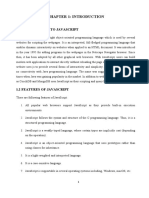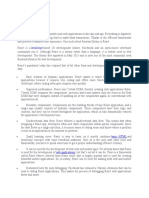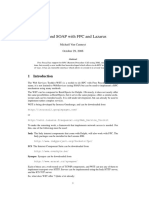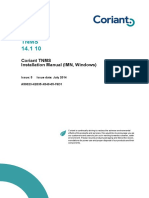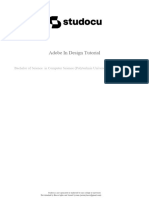0% found this document useful (0 votes)
17 views2 pagesReact NextJS CheatSheet
The document provides concise summaries of key React and Next.js concepts, including JSX, components, props, state management, and routing. It highlights important hooks like useState and useEffect, as well as features specific to Next.js such as static site generation and dynamic routing. Overall, it serves as a quick reference guide for essential topics in React and Next.js development.
Uploaded by
abhyshekbhalajiCopyright
© © All Rights Reserved
We take content rights seriously. If you suspect this is your content, claim it here.
Available Formats
Download as PDF, TXT or read online on Scribd
0% found this document useful (0 votes)
17 views2 pagesReact NextJS CheatSheet
The document provides concise summaries of key React and Next.js concepts, including JSX, components, props, state management, and routing. It highlights important hooks like useState and useEffect, as well as features specific to Next.js such as static site generation and dynamic routing. Overall, it serves as a quick reference guide for essential topics in React and Next.js development.
Uploaded by
abhyshekbhalajiCopyright
© © All Rights Reserved
We take content rights seriously. If you suspect this is your content, claim it here.
Available Formats
Download as PDF, TXT or read online on Scribd
/ 2





































